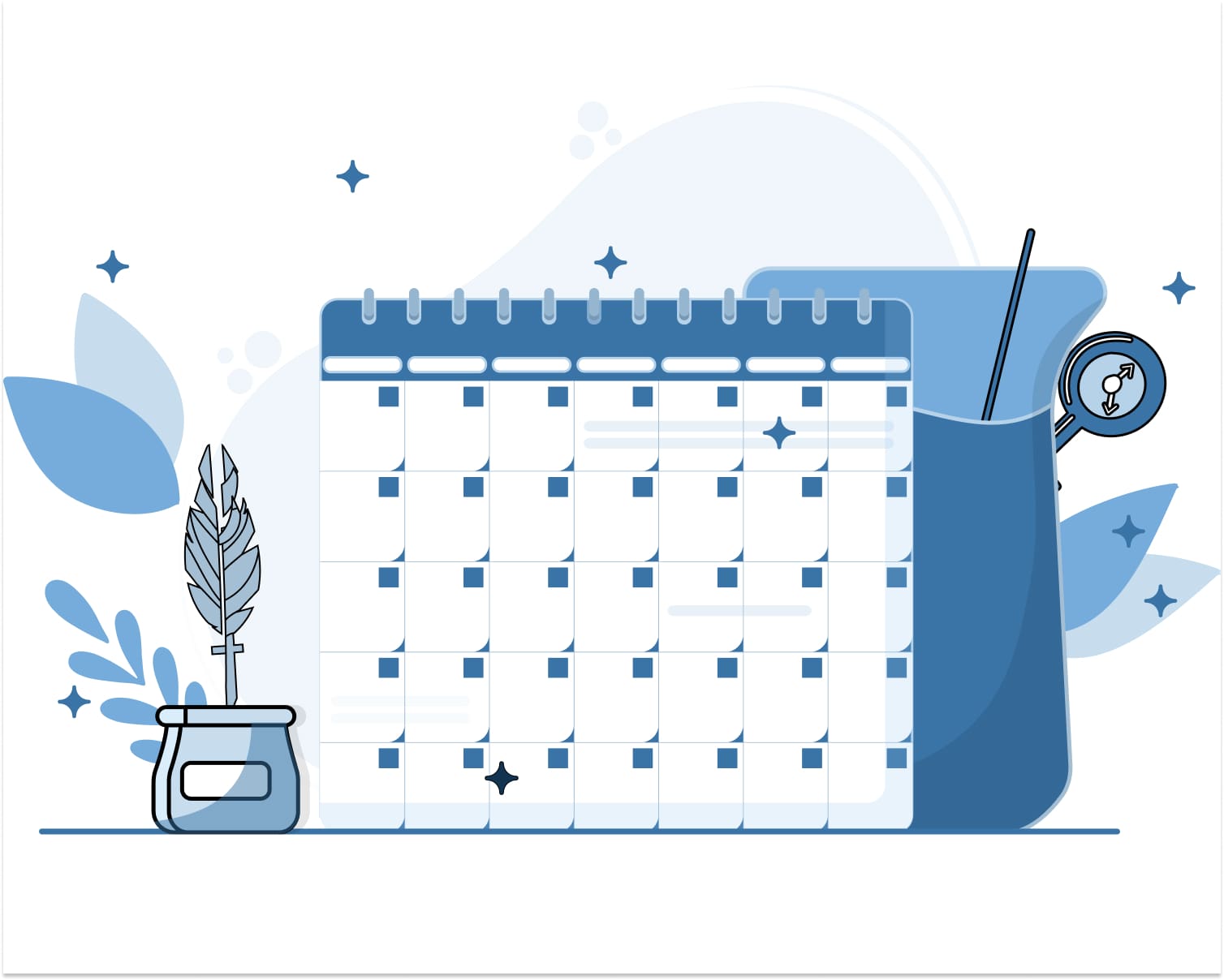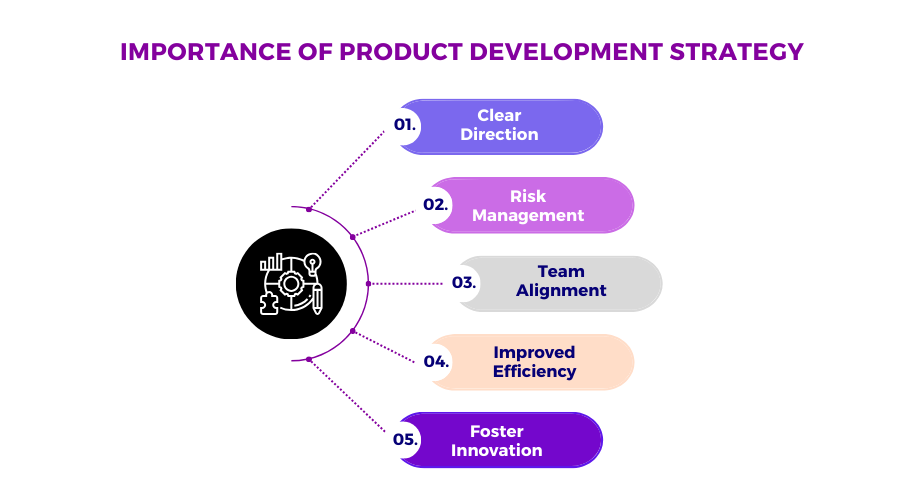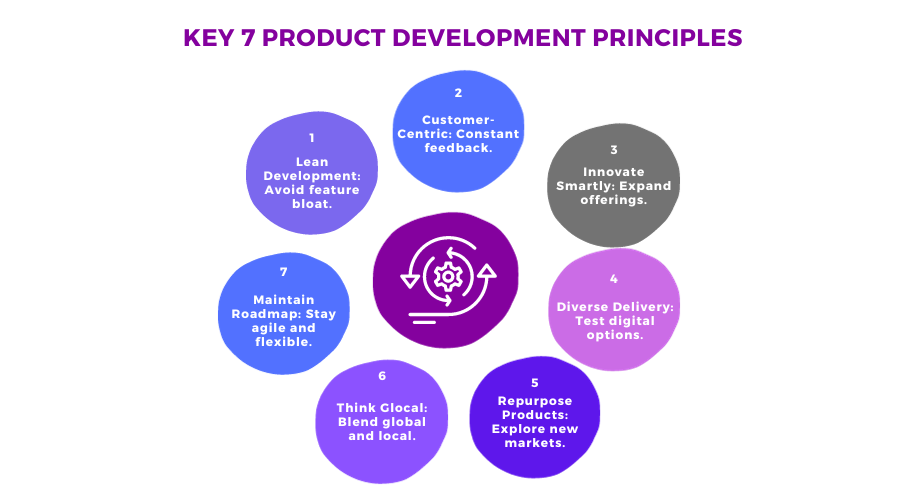7 Tips for Your Next Product Development Strategy

A product can be defined as a tangible or intangible item that is intended to satisfy some want or need. With the market being so saturated, it can be difficult for new products to get noticed. This is where Product Development Strategy comes in – helping companies establish themselves with innovation and creativity. A strategy doesn’t just happen though…it has to be carefully planned out! That’s why we’re here today; to help you with your next product development strategy. These 8 tips from industry experts will rocket-launch you into a success!
What is a product development strategy?
A product development strategy is a framework that helps you navigate the product planning and launch process. It covers such topics as what, why, how, and when in product design and development. It’s now important to note that while product development and product management are two distinct yet related fields, they’re not the same thing. You can’t manage a product without first developing it.
How does this work?
The product development strategy works by giving direction to everyone involved in product creation, which includes managers, engineers, and marketers alike. It is a predefined sequence of steps in the journey of developing or modifying the product. Having a clearly defined and fool-proof product development strategy ensures a smooth and successful product launch and market reception.
Why is a product development strategy important?
If you’re wondering whether or not this article is for you, the answer is yes. The first step toward a successful product is to understand the role of a product development strategy. Most firms or products fail because they neglect this phase of the process or pay it less attention. A product development strategy, much like preparing for an exam, aids in your success. Here are 4 among several reasons why a product development strategy is crucial:
Competitive analysis can give you a long-term yet complex perspective of your product’s market life. It aids in the clear definition of your goals and objectives. With a well-defined method, it makes the product development process more efficient. It prepares you for crisis management in the event of a problem.

To anyone who cares about their business revenue, these points look like the cornerstones of success.
Tips for the Perfect Product Development Strategy
1: Be lean but don’t demean.
When you overemphasize speed in the lean product development process, it may quickly devolve into the production of low-quality goods. When approaching lean product development, it’s critical to focus on the MVP (minimum viable product). The minimum necessary set of features is known as an MVP (minimum viable product). To keep your development lean, avoid feature bloat.
2: Treat users like family. Always include them.
Customer satisfaction should take precedence over everything else unless you have a monopoly in a certain industry. Simply listening to your consumers can tell you if they’re happy. You may obtain feedback from customers at various phases of the product’s development, which will lead to distinct tactics.
CUSTOMER-FIRST
Amazon’s objective is to satisfy the client before they even have a product. In this approach, you start by writing a press release. You then work your way backward, adding features until you reach the fundamental design. Writing the press release first helps ensure that your customer is constantly on your mind as you develop the product. This product development technique focuses on what the user gets to hear when the product is all set!
ONGOING FEEDBACK
Customer feedback should be obtained at every stage in the development process, according to the Agile methodology. As a result of this tactic, product development is less rigid, with fundamental improvements being made once every week rather than once a month. When developing an existing product, Agile works best since it necessitates continuous feedback from existing users. You may obtain this even without surveying new users.
INTERVAL FEEDBACK
Even if your product development isn’t Agile, you may still want to let users try out your product at various stages during its evolution. You’ll need to ask consumers about their experience to provide feedback regularly. This information is incredibly useful in determining whether you’re on the right track as long as you pay attention to it.
3: Don’t be afraid to innovate something different from your core product.
While it’s important to stay true to your brand and what you do best, don’t be afraid to try something new. This will help keep your product fresh in the eyes of consumers and may even result in increased sales. Just make sure that any new features or products are consistent with your company values.
Your core product is without a doubt the reason why customers keep returning. However, that product already exists, and you’re just making it. You want to provide something your consumer wants and can’t obtain from any other company. Ideally, this should complement your main product without being a complete replacement for it or being just a modification. For example, FedEx‘s ability to innovate in package tracking technology.
4: Try Different Modes of Delivery
The way you deliver your product can also be a selling point. For physical products, free shipping is always a bonus. However, with the advent of digital downloads and streaming services, this is no longer as important. In fact, in some cases, it might even work against you if your delivery process is slow or cumbersome.
Digital products are excellent test subjects, especially when combined with Scrum. It allows for fast product iteration and adaptation to results. When you’re experimenting with the product, you must be bold. You may use A/B testing to evaluate how various changes affect user engagement rates or bounce rates.
5: Same product, new use, new market.
You may frequently modify a current product to meet a new need. One approach to see if your product might be used in a new market is to loosely describe its features and ask people unfamiliar with your technology what they would do with it.
You can also use technology trend reports to help you find new opportunities for your products.
When modifying an existing product, always take care to maintain the integrity of the user experience and avoid feature creep. Also, be careful not to cannibalize your own product lines or create conflicts between them.
6: Global + Local = Glocal
When selling products in other countries, it’s important to consider cultural differences and how best to appeal to a local market. For example, what works well in the United States might not work as well in Japan. Additionally, personalizing a product for a specific individual can make them more likely to buy it.
Some items succeed in a big global market but fail to establish themselves elsewhere. Creating sub-products that target particular demographics or regions might help you achieve significant traction. If you build your product with a distinct target market in mind, it could be another hit item.
7: Regularly Maintain Your Roadmap
Setting out a road map can be quite beneficial if you have a well-defined product that is beginning development. Use goal-oriented approaches. When things get tough or unclear, your development team will always have the roadmap as a point of reference. You must check and modify the roadmap as needed. Although no roadmap is perfect when you begin, maintenance and modifications help it stay relevant over the long haul!
Of course, there is no hard and fast rule to building the most successful product development strategy. By keeping the above tips in mind, you are setting yourself up for success and foolproofing against bumps in the road. Ready for more?

